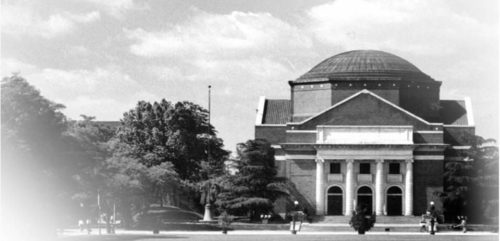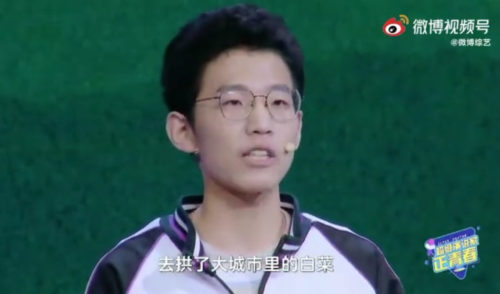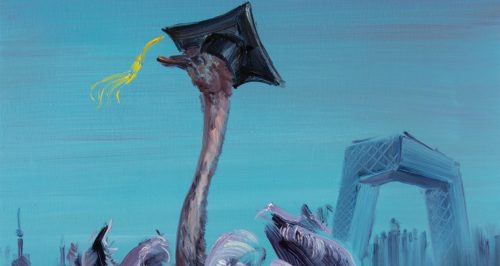Inside China’s annual academic poaching competition
Every summer, China's top two universities, Beida and Tsinghua, go to war. The competition is intense, like Division I powerhouses in the U.S. recruiting the same five-star athletes, only Beida and Tsinghua are after the country's best students.

Each year, within minutes of the posting of the national college examination (gāokǎo 高考) results, a fierce battle erupts in provinces across China. The fight is not between students, though, but between two of China’s most admired institutions: Tsinghua and Peking University.
Armies of phone operators barrage families with calls. Teams of recruiters that were dispatched in the preceding days have already established “bases” in hotel conference rooms, ready at a moment’s notice to pick up the candidates from their homes and bring them in to be wooed and pressured into signing on. Each school has the goal of recruiting the country’s top academic performers to boost their respective minimum entrance requirements — the higher the threshold, the more prestigious their reputation.
And indeed, the prestige these universities enjoy within the borders of the country is difficult to understate, coming as a surprise to many foreigners. Chinese society holds formal education in high regard, and Tsinghua and Peking (usually referred to colloquially as Beida) are in a league of their own, verging on legendary. There are just over 3,000 universities in mainland China, and “TsingBei” (à la “Oxbridge”) top the school rankings from both Chinese and Western assessments every year. Crowds of tourists can be seen year-round snapping selfies at the gates, and mentioning to someone that you come from the alma mater of Lǐ Kèqiáng 李克强 (Beida) or Xi Jinping (Tsinghua) is a ticket to instant approval. Entry to all that glory is largely based on a single number from each hopeful applicant — their gaokao score.
“I can remember sitting on the mountainside behind my high school and just feeling so happy about my result,” recounts Zhang Jie (pseudonym). “I was ranked No. 1 for my city — it was a surprise result, and no one expected me to achieve so highly.”
He speaks in a deliberate but likable way, smiling a little shyly when pressed about his own achievements.
“The scores were released at 6 p.m. My family got the first phone call by 7.”
Beida called first, his mom picking up the phone while the family still digested the news. Taking the university’s contact information, they agreed to arrange a meeting later — that night they just wanted to celebrate. Within 20 minutes, though, the phone rang again, this time with a much more insistent Tsinghua on the line.
After a protracted back-and-forth, the family agreed to be driven to the Tsinghua “base” to have a meeting with a recruitment team. Zhang and his parents were walked through brochure after brochure, outlining the various programs and degrees available to him — as a top-ranked student, he could take his pick. At 3 a.m., he was finally won over. Recruited students must still submit a ranking of their preferred schools through the national application system just like any other applicant, but for them it’s merely a formality — in September, Zhang will be attending Tsinghua.
He seems apparently satisfied with his decision — a Tsinghua pin winks from the lapel of his suit jacket as he explains how he, too, has recently joined the recruitment efforts.
“We really have to hold the line [of minimum scores]. Both schools are trying to do that, to make their line higher than the other.” His choice of words makes it hard not to draw parallels to a battlefield. “The line is really the first image of the university. It’s a strong signal.”
An intense recruitment process
Zhang is just one of the 300 “top 10” students for his year, hailing from each administrative region, and the majority of them would have had a similar experience on the night of their own gaokao results release. In fact, most of them would have been fully expecting it. For high-level academic performers, recruitment can start well over a year before graduation. Both schools offer invitation-only seminars, lectures, or “summer camp” programs for top-performing Grade 10 and 11 students. The goal is to predict those highest gaokao scorers years in advance, and to have already cultivated a level of Tsinghua or Beida pride and loyalty so that signing them later will be easy.
Every recruitment season of June and July finds an escalation of vitriol and rumors directed at both institutions. The competition is so fierce that there is a history of accusations of deceptive practices, bribery, slander, and even violence between recruiters in the pursuit of the highest gaokao scorers. The intensity of the competition for the cream of the crop is perhaps only comparable to some American universities’ efforts to secure athletic prodigies for their football or basketball squads.
Despite the enormous amount of resources put toward high-level recruitment, neither school is in need of students. Any high schooler that performed well on the gaokao is sure to still be a hopeful applicant. The admittance process for Chinese post-secondary schools is a quagmire of quotas and thresholds that vary from province to province and skew heavily in favor of students who have a desirable hukou (household registration, which is tied to a specific city), and while estimates vary, both Tsinghua and Beida are rumored to have below a 0.1% acceptance rate for domestic students.
Such fierce recruitment tactics seem illogical when contextualized with how coveted a seat is already, but Tsinghua and Beida both seek to maintain their reputation of exclusivity by snapping up top students. Alumni of these schools enjoy intangible benefits in Chinese society simply by being alums — being associated with TsingBei guarantees significant “face.” Students with high-enough scores will often forgo their choice of major, perhaps taking history instead of engineering, just to get their foot in the door.
Is the process fair?
The existence of this system is a legacy of the last few decades of China’s development. Through the ’80s and ’90s, a vast majority of high school graduates did not have access to this kind of information. They would not know how or where to apply for university — indeed, many of them would have likely been unaware that schools like TsingBei even existed. With their teachers also unlikely to be university educated, post-secondary recruitment drives were born of necessity to give opportunities to the highest academic achievers.
A double standard also exists for international students who wish to attend. They are much more likely to be granted acceptance, often even financially incentivized with full-ride scholarships despite having significantly poorer academic results than a rejected Chinese applicant. A school’s ability to attract an international student body is a significant factor in the computation of many Western university assessments, including the Times World and QS rankings. Attracting as many international students as possible further boosts rankings and, thus, reputation, all without sullying that ever-important minimum gaokao requirement. There is simply no incentive for anyone involved in the process to demand the same stringent entry standards for applicants from overseas, aside from perhaps a sense of injustice.
The politics, unfairness, and extreme pressures on high schoolers that the university admittance process entails is not a new topic debated among Chinese citizens. A new policy implemented in 2020 called the “Pilot Reform Program of Enrollment for Basic Subjects” (基础学科招生改革试点 jīchǔ xuékē zhāoshēng gǎigé shìdiǎn) aims for a more comprehensive assessment in offering a path for promising students. Now top universities can consider other qualities of an applicant, including their research efforts, political initiatives, or even athletic, artistic, or academic achievements as reasons for admission — even if their gaokao scores fall under the all-important line. Crucially, students admitted under the new program don’t affect a school’s ranking — only students admitted under the traditional gaokao-only process are used in the computation.
These new rules are changing the composition of the student body at China’s top universities, diversifying their skill sets beyond the ability to pass a test. However, with schools’ reputations remaining tied to minimum scores for traditional acceptance, it seems the gaokao will remain an important component to maintaining the luster that brings the best schools so many applicants in the first place.






